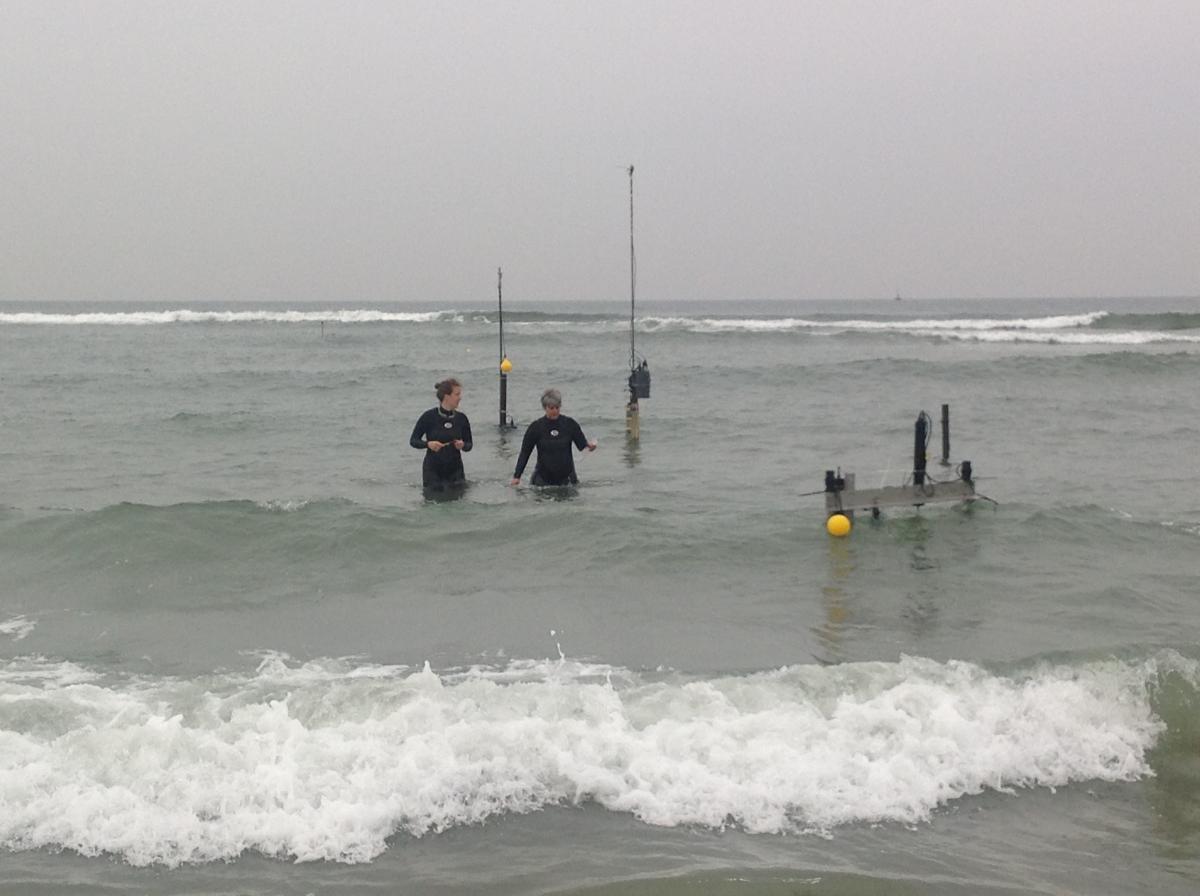
Meagan Wengrove and Diane Foster in the Netherlands returning from a low tide adjustment of instruments.
Ripples and megaripples aggregate our coastlines, inlets, and rivers. The sediment flux associated with the growth and mobility of ripples and megaripples in our coastal areas is important to understanding changes in our beaches. We investigate the contribution of ripple migration and growth to the evolution of larger coastal morphology in current dominant, wave dominant, and combined wave-current dominant flows.
Bedform Geometry and Bedload Sediment Flux in Coastal Combined Wave-Current Flows
As a result of military testing and training around the United States, the property potentially containing military weapons in underwater environments exceeds 10 million acres. The weapons, called munitions, are difficult to locate, can move suddenly, and are a danger to marine life and the public. To better understand their motion, this project is designing a fully instrumented model munition that will be deployed in the nearshore to model and record its response to the dynamic environment.
This project converted a rip rap shoreline into a fringing salt marsh with seaward oyster reefs. Site designs included the seaward sill, imported soils, and geomorphically consistent metrics (slopes, lengths, drainage, etc.). Faculty: David Burdick, Gregg Moore, Ray Grizzle and Thomas P. Ballestero.
A Multi-Habitat Restoration in Cutts Cove, Portsmouth, NH
The sediment-water interface is a region of significant importance to exchange of nutrients to our coasts and oceans, and there is significant public interest in alleviating excess nutrient load to these waters. This project investigates the the small scale hydrodynamics that interact with the sediment bed of shallow mudflats in the Great Bay Estuary in New Hampshire in an effort to better understand the sources of nutrients to the Bay.
Observations of tidal boundary layers in the Great Bay Estuary
